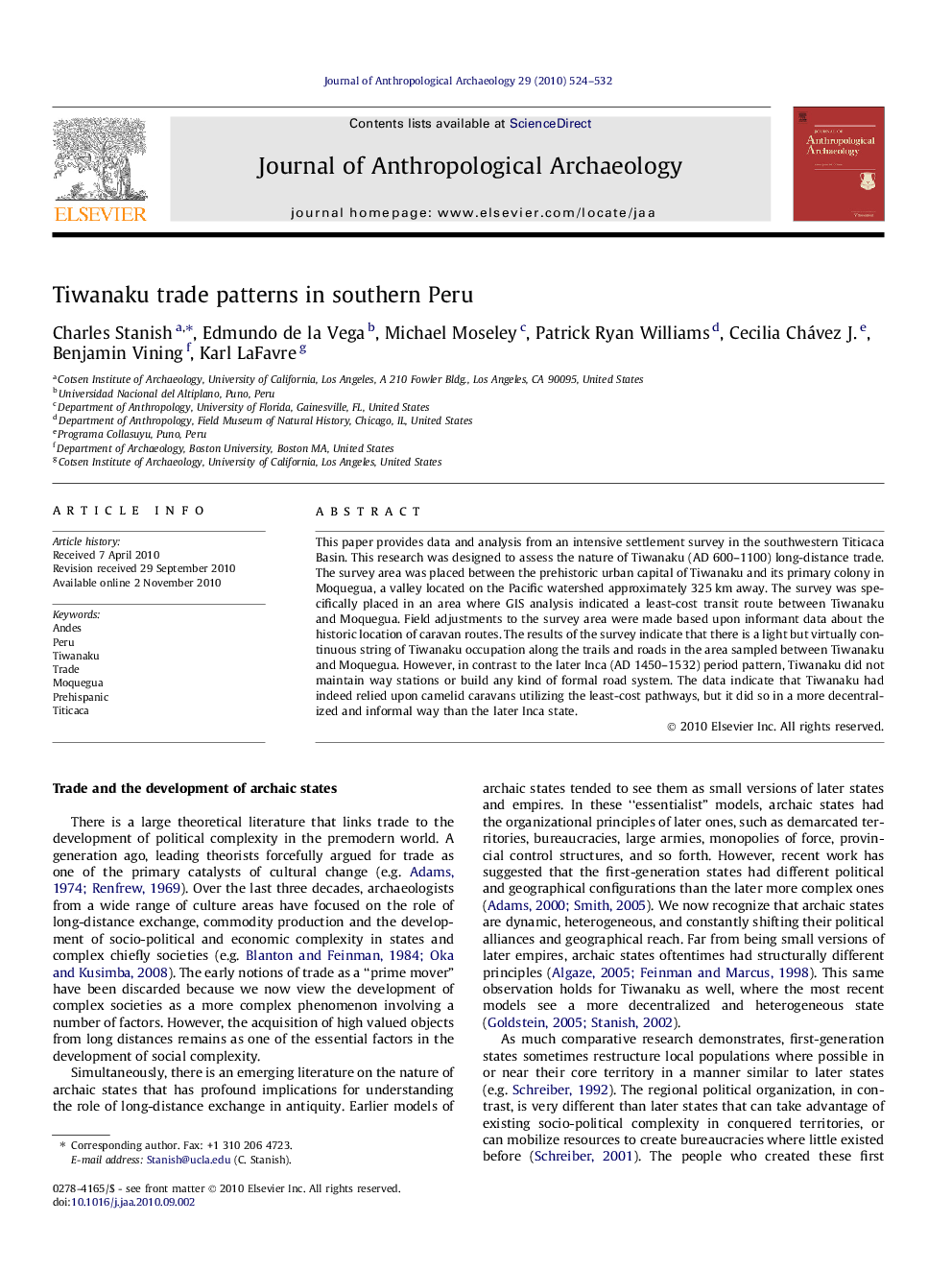| Article ID | Journal | Published Year | Pages | File Type |
|---|---|---|---|---|
| 1035094 | Journal of Anthropological Archaeology | 2010 | 9 Pages |
This paper provides data and analysis from an intensive settlement survey in the southwestern Titicaca Basin. This research was designed to assess the nature of Tiwanaku (AD 600–1100) long-distance trade. The survey area was placed between the prehistoric urban capital of Tiwanaku and its primary colony in Moquegua, a valley located on the Pacific watershed approximately 325 km away. The survey was specifically placed in an area where GIS analysis indicated a least-cost transit route between Tiwanaku and Moquegua. Field adjustments to the survey area were made based upon informant data about the historic location of caravan routes. The results of the survey indicate that there is a light but virtually continuous string of Tiwanaku occupation along the trails and roads in the area sampled between Tiwanaku and Moquegua. However, in contrast to the later Inca (AD 1450–1532) period pattern, Tiwanaku did not maintain way stations or build any kind of formal road system. The data indicate that Tiwanaku had indeed relied upon camelid caravans utilizing the least-cost pathways, but it did so in a more decentralized and informal way than the later Inca state.
Graphical abstractFigure optionsDownload full-size imageDownload high-quality image (122 K)Download as PowerPoint slideResearch highlights► Analysis from an intensive settlement survey in the southwestern Titicaca Basin. ► Continuous string of Tiwanaku sites along the road between Tiwanaku and Moquegua. ► Tiwanaku relied upon caravans utilizing least-cost pathways in an informal system.
